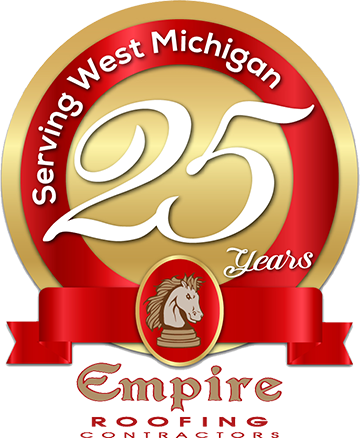
Regular commercial roof inspection is crucial for identifying potential problems before they become costly repairs. Understanding the most common defects and failure points can help building owners and facility managers maintain their roofing systems effectively and extend their service life.
To protect your Grand Rapids, MI commercial investment, trust the experts at Empire Contracting. Call 231-861-7221 to schedule your consultation.
Common Roof Defects
Membrane Punctures and Tears
One of the most frequent issues discovered during a commercial roof inspection is damage to roofing membranes. Whether your building has EPDM, TPO, PVC, or modified bitumen, these materials can develop punctures and tears from foot traffic, fallen debris, or improper installation. These openings allow water to penetrate beneath the membrane, causing insulation damage and interior leaks.
Improper Flashing Installation
Flashings are critical components that seal transitions between the roof and vertical surfaces like walls, curbs, and penetrations. During a thorough commercial roof inspection, professionals often find improperly installed or deteriorated flashings. This defect accounts for nearly 80% of all roof leaks and can significantly reduce a roof’s lifespan if not addressed promptly.
Standing Water and Poor Drainage
Commercial flat roofs are particularly susceptible to ponding water, which occurs when water remains on the roof surface for more than 48 hours after rainfall. A professional commercial roof inspection will identify drainage issues caused by clogged drains, inadequate slope, or structural deflection. Standing water accelerates membrane deterioration and can add significant weight to the roof structure.
Aging and UV Degradation
Over time, all roofing materials deteriorate from exposure to the elements. UV radiation causes membranes to become brittle and crack, while thermal cycling leads to expansion and contraction that weakens seams. Regular commercial roof inspection helps identify areas showing signs of advanced aging before they fail completely.

Open Seams and Failed Sealants
Seam failures are commonly identified during commercial roof inspection services. Whether heat-welded, adhered, or sealed, these connection points between roofing materials are vulnerable to separation. Similarly, sealants around penetrations and terminations deteriorate over time, creating entry points for moisture.
Contractor Damage
Surprisingly, many roof problems stem from other tradespeople working on the roof. HVAC maintenance, antenna installations, and other services can inadvertently damage roofing materials. A scheduled commercial roof inspection program helps identify this damage before it leads to significant problems.
Preventative Measures
Implementing a regular commercial roof inspection schedule is the most effective way to prevent these common defects from causing major failures. Biannual inspections, especially after severe weather events, allow for early detection and repair of minor issues before they escalate into costly problems.
Comprehensive Roof Inspection Services
By understanding these common failure points and investing in professional commercial roof inspection services, building owners can protect their assets and avoid unexpected disruptions to their operations.
To learn more ways to protect your Grand Rapids, MI commercial investment, call 231-861-7221 and speak with an expert today.
Frequently Asked Questions
How often should I schedule a commercial roof inspection?
Most roofing experts recommend scheduling professional commercial roof inspections at least twice a year—typically in spring and fall. Additional inspections should be conducted after severe weather events like hailstorms, high winds, or heavy snowfall.
What qualifications should a commercial roof inspector have?
Look for inspectors with certifications from recognized industry organizations such as the National Roofing Contractors Association (NRCA) or International Institute of Building Enclosure Consultants (IIBEC). Experience with your specific roofing system type is also essential.
Can a commercial roof inspection prevent expensive repairs?
Absolutely. Regular commercial roof inspections can identify minor issues before they develop into major problems, potentially saving thousands in repair costs and extending your roof’s lifespan by 5-10 years.
What should be included in a commercial roof inspection report?
A comprehensive report should include detailed documentation of all findings with photographs, condition assessments of all roofing components, identified deficiencies, recommended repairs
